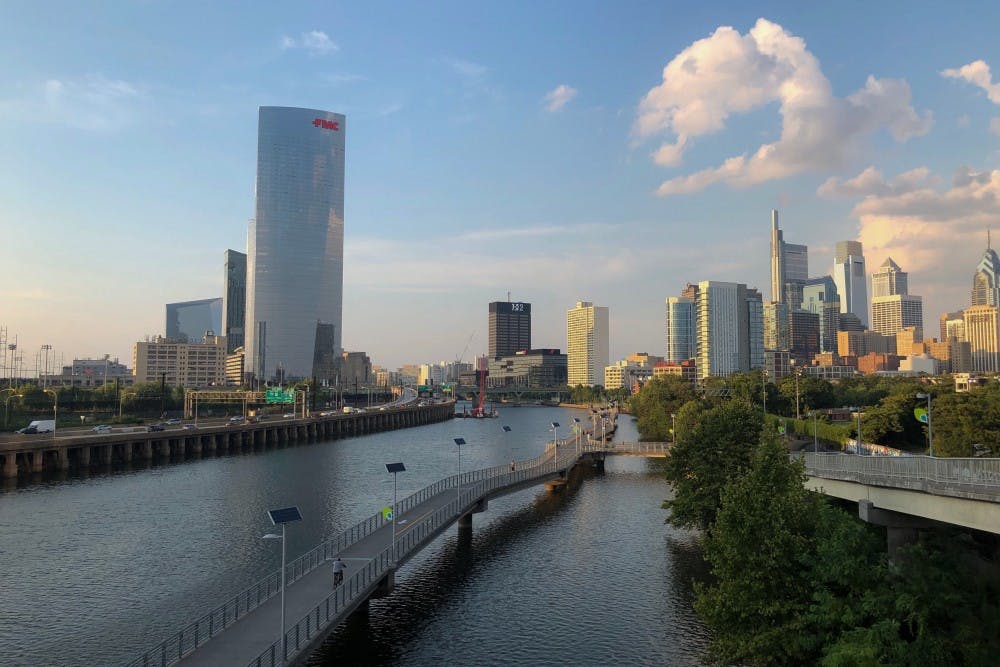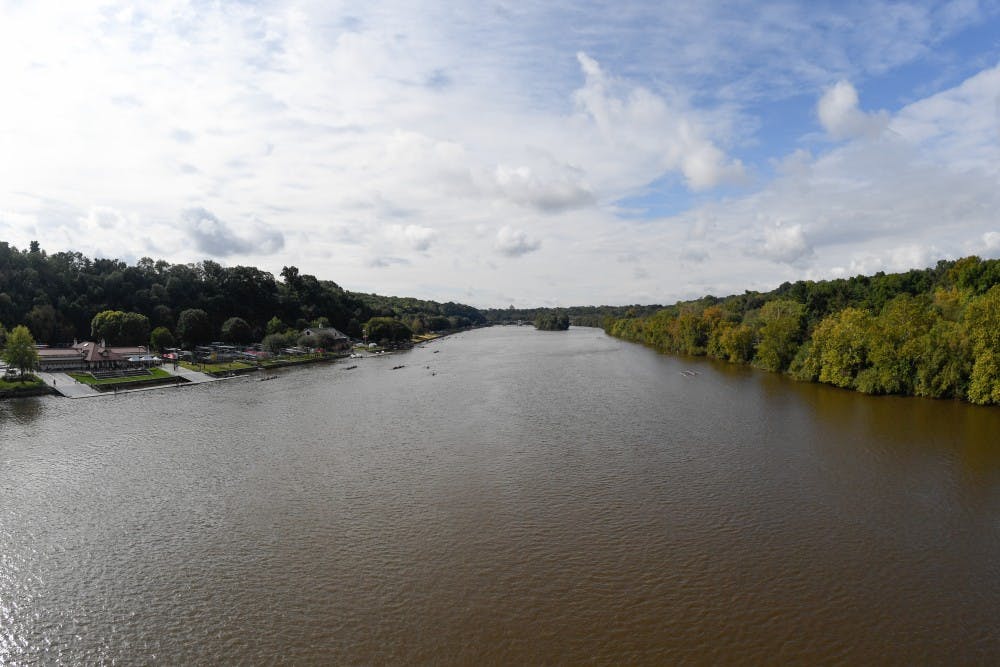
The Schuylkill River will be dredged after 20 years.
Credit: Sukhmani KaurIn May, Philadelphia city officials announced that the Schuylkill River would be dredged for the first time in over twenty years. Now, a team that includes a Penn Design professor is researching strategies to keep the river clear for decades to come.
Universities, philanthropists, rowing clubs, and city and state government collectively committed $4.5 million to dredge the Schuylkill of silt and debris. Prior to the announcement, Schuylkill Navy officers warned rowing teams they would have to move their meets out of Philadelphia as soon as 2020 if the river was not dredged. Seven local universities with crew programs contributed nearly half of the full donation, including Penn, Drexel, and Temple.
Of the seven schools, Penn made the largest commitment, pledging $750,000.
Tom Forkin, the Deputy Director of Properties and Partnerships for Philadelphia's Parks and Recreation Department, said he appreciated the University’s contributions to the project.
“They’ve been tremendous,” Forkin said. “Penn has been one of the key lead institutions in the entire effort, no question about it.”

Moving forward, the Schuylkill Navy’s River Restoration Committee will work to create a program to dredge the river of silt every ten years, according to committee head Paul Laskow.
“[A decennial dredge plan] is a while off,” Laskow said. “But we’re trying to keep the momentum going to get that done.”
Schuylkill Navy Commodore Paul Horvat said the program would be especially focused on trying to understand how silt accumulates along boathouse row.
Penn Design professor Sean Burkholder said he will work with the Schulykill Navy to study the river and establish the decennial dredge plan. Burkholder, who is also a specialist in freshwater ecosystems, said the program will help reduce costs and prevent crew teams from relocating because of silt build-up.
“Raising all this money every ten years is hard to do and this is a very clear example of how difficult it was,” Burkholder said. “So we’re looking at a process that is much more productive at managing sedimental buildup over a longer period of time with smaller amounts of money.”
Burkholder said he is also researching methods to relocate sediment which will make the river more navigable and create new habitats.
“In the Great Lakes region, freshwater ecosystems similar to the Schuylkill, we’re using the sediment to build wetlands, basically creating aquatic habitat for fish and then also mudflats and marsh habitats for birds,” Burkholder added.
The schedule for the current dredge, however, has not been solidified. Forkin said he was notified last Thursday that the current project had received the necessary authorization from Congress. He said the U.S. Army Corps of Engineers, which will oversee the dredge, now plans to start formally advertising contracts for the project this week.
Forkin estimated that work would begin on the river sometime in the fall. Although this timeline will not impact the 2020 regatta season, Horvat said it requires crew teams to use different docks while the lanes in front of their boathouses are being dredged.
Wesley Ng, the head coach of the Penn women’s crew team, wrote in an email to The Daily Pennsylvanian that the team is prepared to handle these conditions. He and the team will use a temporary launching site for two to four weeks while workers dredge the area in front of the Penn Boathouse.
Ng added he was grateful for the University’s contributions towards maintaining the river.
“I know that the Penn Rowing community, as part of the greater Philadelphia rowing community, are incredibly thankful for the University’s commitment,” Ng wrote. “I know it spoke very clearly to our students, alumni, and recruits about the importance of rowing to the fabric of the university and also how Penn values being a force for positive change in the City.”
The Daily Pennsylvanian is an independent, student-run newspaper. Please consider making a donation to support the coverage that shapes the University. Your generosity ensures a future of strong journalism at Penn.
Donate







